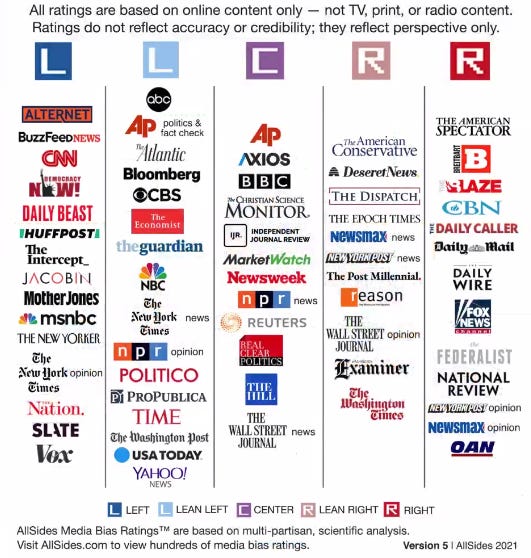#43 - Educational Storytelling in Astronomy - Astronomy - & 1 more [Paid Post]
TCA 1/27/23: A "Complete" Guide to Telling Astronomy as a Story; Media Literacy--How to Question Astronomy News; Teachnique-Earth-Moon to Scale; The Latest (and Next) Stories in TGT InDepth Magazine
Cover Photo - Mainstream(?) Sources of Science News
In This Issue:
Cover Photo - Mainstream(?) Sources of Science News
Welcome to Issue 43!
Deeper Looks -
- AAS: Storytelling the Story of Astronomy
- AAS: Astronomy Media LiteracyAstronomical Teachnique - Earth-Moon to Scale
The Galactic Times InDepth Newsletter-Inbox Magazine Highlights
Welcome to The Classroom Astronomer Newsletter-Inbox Magazine #43!
We begin our coverage of educational news from the January American Astronomical Society (AAS) meeting. Two lengthy reports on creating, and evaluating, stories on astronomy; a how-to guide to astronomy storytelling and a media literacy set of questions your students should ask. Plus a photo that should be posted on every astronomy class wall, Earth-Moon to scale.
- - -
Key websites: Homepage for The Classroom Astronomer, with its index to all Inbox Magazine issues’ contents, by celestial object, educational subject area, grade level or venue, and with complete Tables of Contents:
https://www.classroomastronomer.com . Not a Full Paid Subscriber? Become one by putting your email in the box below (and then you’ll have access to the Archive of all past issues!).
The ultimate home of our Universe — Hermograph Press — has its homepage at: www.hermograph.com and its Store, for educational materials and books, at: www.hermograph.com/store .
- - -
Thanks for subscribing!
Publisher -- Dr. Larry Krumenaker
Deeper Looks
AAS: Storytelling the Story of Astronomy
One of my most favorite research paper/talk titles recently was a “story” about all the fragments of galaxies that have collided with the Milky Way and been ‘digested’ into our spiral; it was called “Twelve for Dinner.” That title got my attention. And this “story” point has always gotten me into arguments with my scholarly colleagues—I consider ANY work on paper, no matter how arcane, a “story.” To them that was an insult. To me, even if you look at something from Nature Astronomy or the Astrophysical Journal, there is a plot, structure and conclusion to the piece. In fact, without an interesting title, abstract, and readable story, you likely won’t even get read.
But the formalities of research journals aren’t going to get much attraction from students. You need to use some more interesting plot styles that can give educators ways to tell stories about astronomy in their lessons that may just keep students riveted to you in class.
AND You Could BUT Have You Done That and THEREFORE….
Ka Chun Yu of the Denver Museum of Nature and Science starts us off with his poster presentation entitled Communication Science with Presentation: The And-But-Therefore Framework. ABT has three clear parts. AND is the Setup, where there are introductory statements everybody agrees on, no tension, no conflict. BUT is the Conflict, where contradiction goes against prior statements, adds tension, questioning. THEREFORE is the Resolution of the story, where the conflict is resolved, and the narrative is concluded. But ABT can have ABT factors within each of the three parts as well. The AND, BUT, THEREFORE are not words to be used exclusively in your narrative. You can substitute (agreement, also, likewise, furthermore), or (despite, conversely, instead), and (thus, consequently, hence) and other terms in the different three parts to make the narrative more interesting and flowing.




